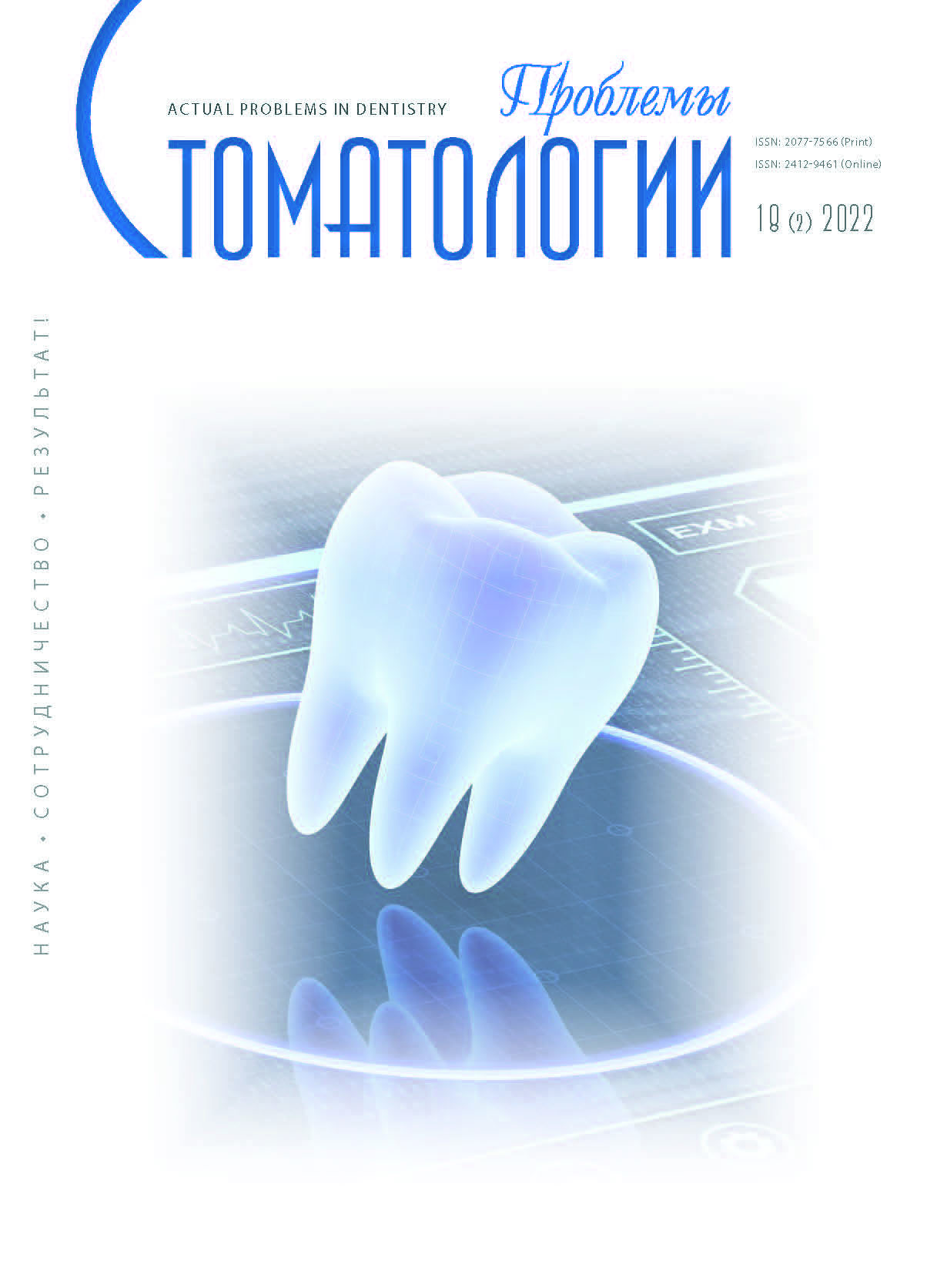Samara, Samara, Russian Federation
Samara, Samara, Russian Federation
Samara, Samara, Russian Federation
Samara, Samara, Russian Federation
Samara, Samara, Russian Federation
Samara, Samara, Russian Federation
Samara, Samara, Russian Federation
Samara, Samara, Russian Federation
Samara, Samara, Russian Federation
UDC 616
CSCSTI 76.29
Russian Classification of Professions by Education 31.00.00
Russian Library and Bibliographic Classification 566
Subject. Mechanical and chemical properties of home whitening products most commonly used by patients. Objectives. Conduct a comparative analysis of the impact of different types of home whitening on tooth enamel (in vitro). Methodology. The study was conducted at the Department of Dentistry, at the Department of Morphology and Pathology (M&P) of the Medical University "Reaviz". The survey of 50 patients aged 18 to 55 years was conducted regarding the use of home whitening types. The results of the impact of home whitening products, listed by patients, on tooth enamel (in vitro) were analyzed: Phillips Zoom, Crest strips, and birch (activated) charcoal (recommended by some patients). Results. The survey of patients showed that out of 50 patients, 44 people resorted to teeth whitening in their lives, this amounted to 88% of the patients surveyed. Of the 44 patients who resorted to teeth whitening, only 20 people (45%) regularly visit a dentist for professional whitening and selection of home whitening methods. As a rule, this is the Phillips Zoom home whitening system. The remaining 24 patients (55%) use home whitening methods on their own: Crest whitening strips, or brush their teeth using ground birch (activated) charcoal. The impact of home whitening products on tooth enamel (in vitro): Phillips Zoom – tooth enamel became lighter by 3 tones and without spots, Crest strips – enamel lightening by only one tone, heterogeneous; birch (activated) charcoal – the enamel became lighter by 1 tone and covered with small scratches. Conclusions. The most effective whitening method for teeth is using Phillips Zoom home whitening methods. The enamel brightened by 3 tones according to the VITA classical shade scale (p < 0.05) and without visible damage.
home whitening, tooth enamel, shade uniformity, enamel cracks, hyperesthesia
1. Byval'ceva S.Yu., Vinogradova A.V., Dorzhieva Z.V. Otbelivanie zubov v terapevticheskoy stomatologii. Uchebnoe posobie. Irkutsk : IGMU. 2012:32. [S.Yu. Byvaltseva, A.V. Vinogradova, Z.V. Dorzhiev. Teeth whitening in therapeutic dentistry. Textbook. Irkutsk : IGMU. 2012:32. (In Russ.)]. https://www.twirpx.com/file/3114979/
2. Melenberg T.V., Titova O.Yu., Burov A.I., Levina N.M., Solodchenko Yu.V., Dayronas S.K., Dayronas E.G. Sposoby ustraneniya diskolorita zubov. Mediko-farmacevticheskiy zhurnal "Pul's". 2021;23(2):53-59. [T.V. Melenberg, O.Yu.Titova, A.I.Burov, N.M.Levina, Yu.V.Solodchenko, S.K.Daironas, E.G. Daironas. Ways to eliminate discoloration of teeth. Medical-pharmaceutical journal "Pulse". 2021;23(2):53-59. (In Russ.)]. DOI:https://doi.org/10.26787/nydha-2686-6838-2021-23-2-53-59
3. Luckaya I.K. Esteticheskaya stomatologiya kak samostoyatel'naya oblast' stomatologicheskoy nauki i praktiki. Sovremennaya stomatologiya. 2013;1(56):5-12. [I.K. Lutskaya. Aesthetic dentistry as an independent field of dental science and practice. Modern dentistry. 2013;1(56):5-12. (In Russ.)]. https://cyberleninka.ru/article/n/esteticheskaya-stomatologiya-kak-samostoyatelnaya-oblast-stomatologicheskoy-nauki-i-praktiki
4. Sadykov I. Klassifikaciya izmeneniy cveta zubov, diskolority po MKB. Elektronnyy resurs. [I. Sadykov. Classification of teeth color changes, discolorations according to the ICD. Electronic resource. (In Russ.)]. https://odonta.org/article/otbelivanie/49-klassifikatsiya-diskoloritov
5. Kamenskih K.V. Povyshennaya chuvstvitel'nost' zubov: lechenie Elektronnyy resurs. [K.V. Kamenskikh. Hypersensitivity of teeth: treatment. Electronic resource. (In Russ.)]. https://24stoma.ru/chuvstvitelnost-zubov.html
6. Populyarno o stomatologii. Kosmeticheskaya stomatologiya. Elektronnyy resurs. [Popular about dentistry. Cosmetic dentistry. Electronic resource. (In Russ.)]. http://dentazone.ru/kosmeticheskaya/otbelivanie/aktivirovannym-uglem.html



















